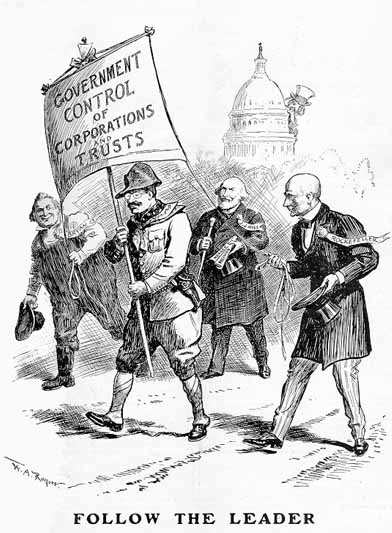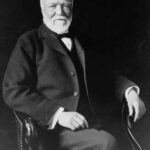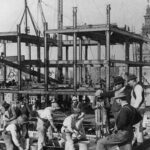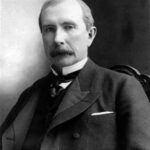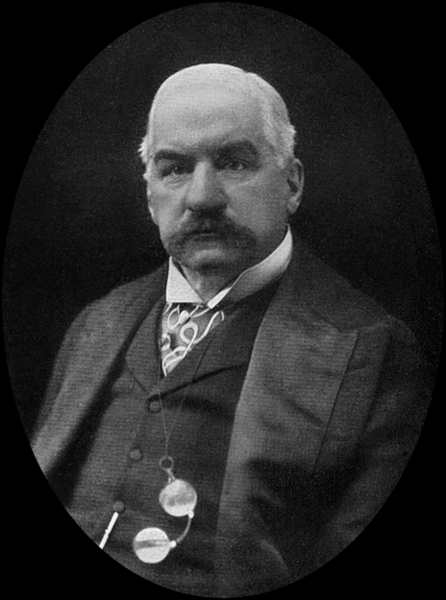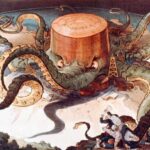The American Industrial revolution owes a debt to the captains of industry. JP Morgan was known for locating companies that were fighting each other and who were in financial trouble. He would then bring these companies together and manage them in such a way that competition was reduced and inefficiencies could be eliminated. Through consolidation, he would merge and eliminate jobs to improve the company’s value by increasing profits over everything else.
Soon his rivals Andrew Carnegie and JD Rockefeller saw his wisdom and followed suit. They cut workers and forced the ones with jobs to work harder for less pay. The gap between rich and poor grew and the captains of the Industrial Revolution were soon depicted as the symbols of everything that was wrong with America. Williams Jennings Bryant was a politician running for President of the United States. His platform offered hope and change to the middle class. He vowed to put an end to the monopolies.
Since public opinion was solidly against the remaining captains of industry, Rockefeller, Carnegie, and Morgan agreed to put their rivalries aside and work together. Since Bryant was running for President, they figured their best plan of attack was to use their wealth to buy political favor with the President of the United States. They made the decision to back William McKinley’s presidential run against Bryant and funded McKinley’s campaign.
They used their influence as major employers by telling their employees that if Bryant won the election on Tuesday, don’t bother to show up for work on Wednesday as they would be shutting down. This fear tactic caused 90% of the population to vote. There was no secret ballot back then and everyone knew who you voted for. There was a line to cast your vote for the Republican McKinley and a line for the Democrat Bryant. Supervisors could observe who you voted for. McKinley won the election, making all of the issues not favorable to captains of industry disappear.
With the election behind them, it was back to business as usual. JD Rockefeller renewed his rivalry with Carnegie and blocked Andrew Carnegie’s expansion by buying up iron ore mines and selling the ore to Carnegie’s competitors at rock bottom prices. Carnegie Steel lost many of their customers to their competitors based on price. Then JD Rockefeller made plans to build steel plants to compete for head to head with Carnegie. Andrew Carnegie agreed to buy all the ore from Rockefeller if he elected not to build competing steel plants. The agreement satisfied Rockefeller since his biggest rival, Andrew Carnegie, would be paying to make him even richer.
Seeing blood in the water, JP Morgan used his influence in mining and railroads to consolidate the steel industry. Andrew Carnegie, already hurting from his battle with Rockefeller, was in no condition to take on Morgan. In a move, Morgan backed Charles Schwab, Carnegie Steel’s new number two man in a deal to buy Carnegie Steel for $480 million. To put that offer into perspective, $480 million dollars in today’s dollars is more than the entire federal budget, at that time, plus the net worth of Warren Buffet and Bill Gates fortunes combined. Carnegie agreed to sell Carnegie Steel and became the richest man in history. In today’s money, Carnegie was worth the equivalent of $310 billion dollars.
The new company under Charles Schwab became known as “US Steel.” Andrew Carnegie’s exit timing was perfect because in that same year William McKinley was assassinated and Theodore Roosevelt, the former Governor of New York and McKinley’s VP, became President of the United States. In a turn of fate, William McKinley was assassinated by a guy who lost his job when JP Morgan bought out Andrew Carnegie to create US Steel and felt that President McKinley was too close to big business.
For Morgan and Rockefeller, their worst nightmares emerged as Roosevelt became President because unlike McKinley, they could not buy Roosevelt. Historically, the Vice President of the United States was a powerless position and were non-entities in politics. Moreover, the VP was never destined to become President.
Roosevelt was known for the fair deal and as a trust buster. The antitrust movement under Roosevelt broke up JP Morgan’s railroad empire. JP Morgan used his influence, however, to keep US Steel out of Roosevelt’s crosshairs by helping to broker a deal to build the Panama Canal, a pet project of Roosevelt.
Next up was Rockefeller’s Standard Oil. Rockefeller was forced to testify and Standard Oil was broken up into 34 smaller companies. Some of those companies went on to become Exxon, Mobil, and Chevron. Rockefeller remained their largest stockholder and made, even more, money than before. Rockefeller’s net worth amounted to $660 billion in today’s money and he achieved his goal of becoming the richest man, surpassing his rival Andrew Carnegie.
In the final chapter, Henry Ford developed the people’s car. Prior to Ford, all cars were chauffeur driven and were only for the ultra-rich. However, a monopoly owned the patent on all cars produced and they demanded a steep royalty on all of Ford’s cars, making them much less affordable for the average man. Henry Ford banked on the trend that monopolies were being busted up and continued building his cars in spite of the patent lawsuit against Ford.
Ford even agreed to pay his workers to double the scale rate and became known as the anti-captain of industry who cared about the worker. The court ruled that Ford’s car was not covered by the patent and Ford rode the anti-monopoly wave into history. The cars that Ford produced were fueled by the gasoline that was made possible by Rockefeller’s Standard Oil. The cars were made of steel that was produced by Andrew Carnegie and built in a plant powered by JP Morgan’s Electricity.
During an approximately 35 year period starting at the end of the Civil War until the turn of the century, the United States experienced one of its greatest periods of innovation: The American Industrial Revolution. The American Industrial Revolution was made possible by men that risked everything time and time again, men who raised the standard of living for every American and created what we now call the middle class. These men launched the United States into an era of prosperity after the Civil War and helped to establish America as the richest nation in the world.
Andrew Carnegie gave away the equivalent of $67 billion to build libraries and JD Rockefeller created the Rockefeller Foundation, which gave away the equivalent of $38 billion to advance public health. The captains of industry may have been ruthless businessmen and fierce competitors that used their power and money to control their competition, but they did so with their own money and improved the quality of life for all Americans.
Without the likes of JP Morgan, the man who used his power and influence to help save the nation by loaning the federal government more than $60 million and convinced the country’s top financiers to bail out faltering financial institutions in order to stabilize the market, who knows where America would be today?
Not a bad track record for men who the federal government convinced United States citizens that these men were robber barons who deserved to be crushed so these political leaders could advance their own careers.
The federal government has a history of squelching the successful entrepreneur by spinning a story for its own political gain. The Sherman Antitrust Act of 1890 was used to break up Standard Oil and Morgan’s railroads. It was used more recently to break up AT&T and force Microsoft to give away its propitiatory API to third-party companies.
How has the idea of successful businesses led by competent leaders been spun into something bad that the government feels they need to protect us all against? What lessons from the stories of the captains of the American Industrial Revolution can you apply to your business? Moreover, what can you do to keep the federal government from killing the spirit of the American businessman?

